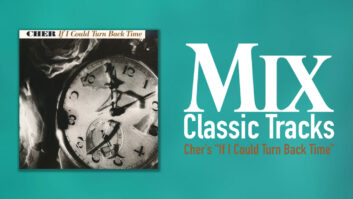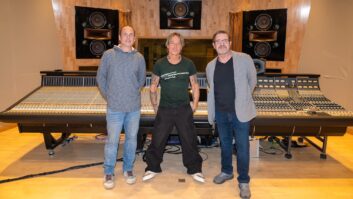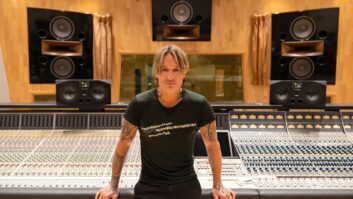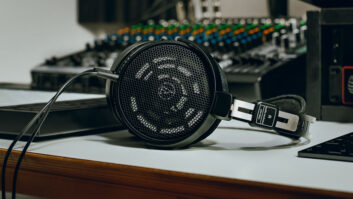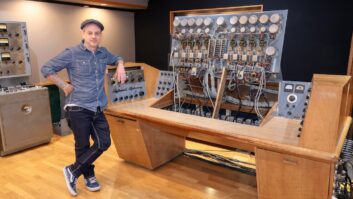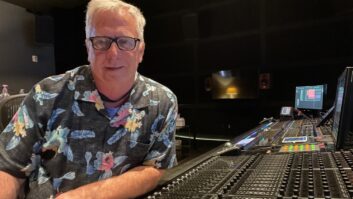Nashville, TN (August 2, 2019)—Cutting lathes are an integral piece of equipment that determines whether or not a vinyl record in 2019 can be manufactured using a new stamper. The problem is that no manufacturer in the world has made one since the early 1980s, which is why lathes are a hot commodity whenever one surfaces for auction.
That’s why Eric Conn of Nashville-based Independent Mastering jumped when he spotted an online listing in 2014 for three main components—the bathtub, sled and original platter—of a Scully fixed-pitch model 501 lathe that appears to be from the early 1940s. Three thousand dollars later, the components were his—but the purchase was really just the first step on a four-year odyssey to rebuild the lathe into a functioning machine. “They came out of a warehouse in New Jersey,” said Conn. “I knew what I was getting into.”

Conn had been mastering audio for vinyl, CD and streaming distribution for 22 years, but the acquisition (or construction) of a lathe would support an additional revenue stream for Independent Mastering, a business Conn runs with recording/mixing/mastering veteran Don Cobb. The two partners’ collective credits include a who’s who of popular music, including Willie Nelson, Neil Young, James Taylor, the Pointer Sisters, Quincy Jones, Garth Brooks, Sheryl Crow, Alison Krauss, Sheryl Crow, George Strait and Trisha Yearwood, among numerous other artists.
That background helped as they got started on the project, but the duo still had much to learn. “I found the [lathe] community helpful to source some of what was needed,” Conn said, citing expert help from California, New York and Switzerland. In particular, he received assistance from Los Angeles lathe guru Len Horowitz of the History of Recorded Sound.

Key pieces were still missing, including a vacuum system for the platter, electronics, microscope, light and a table. Some parts needed to be re-created by machine shops, but Conn found other parts on eBay, including useful pieces culled from other lathe manufacturers, such as Westrex and Neumann. “I’m a mastering engineer, not a machinist,” Conn demurred, yet he ended up building the lathe’s drive system himself.
Leesta Vall’s Fast-Paced Lathe, by Steve Harvey, March 26, 2019
Conn ultimately spent $25,000 to $30,000 getting all the ingredients to rebuild the lathe. It’s not lost on him that he could have spared himself a lot of heartache if he’d just bought a lathe and skipped the DIY project: first in 2005 and then again in 2010, Conn contemplated buying an intact lathe for sale locally in Nashville, but he didn’t have the cash flow either time to support such a purchase.
Nonetheless, perseverance paid off when the lathe was finally completed in the summer of 2018. The first project Conn cut was a rockabilly record for musician Paul Burch.
With the project now complete, Conn refers to the lathe as FrankenScully, though he also half-jokes that Herman Melville’s Moby Dick character Ahab, the whale hunter, was also an inspiration during the arduous journey to a functioning machine. While Conn termed the effort “therapeutic,” he noted that anyone contemplating such a lathe-building endeavor must never lose his or her “curiosity and must never give up.”
Independent Mastering • www.independentmastering.com
Want more stories like this? Subscribe to our newsletter and get it delivered right to your inbox.
